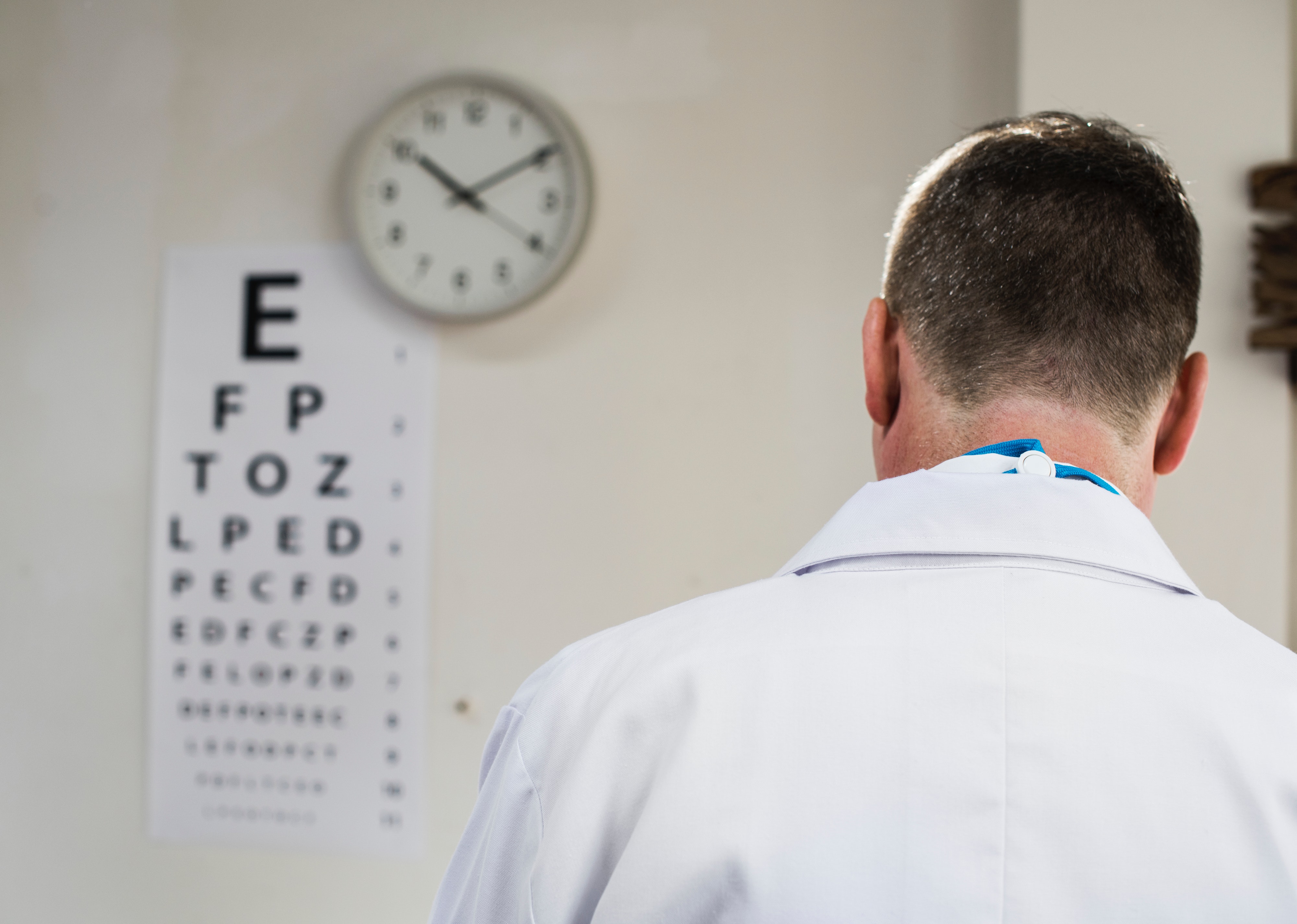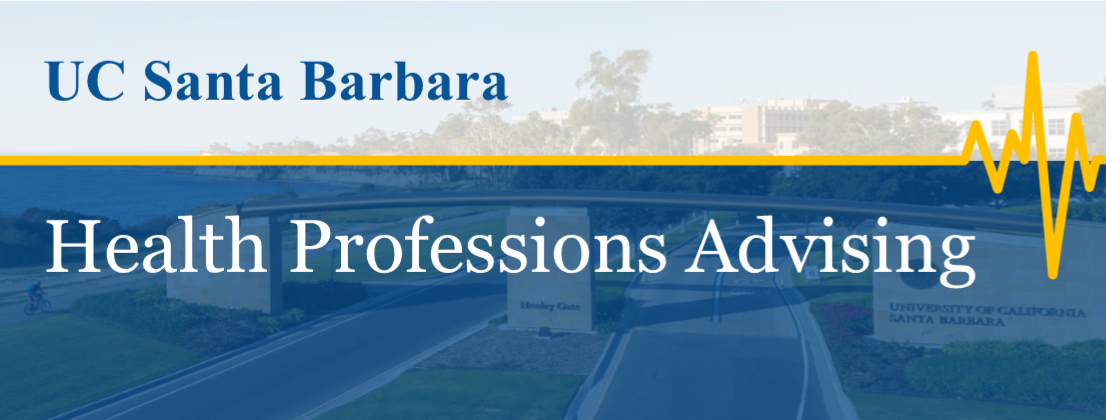UCSB Optometry School Preparation Chart Click Here

SO YOU WANT TO BE AN OPTOMETRIST?
Optometrists work to evaluate, improve, and preserve vision. They diagnose and treat certain conditions and diseases of the eye. Depending on the diagnosis, optometrists may prescribe medication, visual training, or corrective lenses. They examine the internal and external structure of the eye, evaluate vision and determine if glasses or contact lenses are needed.
PREREQUISITES: THESE ARE GENERAL PREREQUISITE COURSES THAT MANY OPTOMETRY SCHOOLS REQUIRE FOR ADMISSION; HOWEVER, COURSE REQUIREMENTS OFTEN VARY FROM ONE SCHOOL TO THE NEXT. ADDITIONALLY, THERE ARE SEVERAL OTHER COURSES THAT ARE NOT REQUIRED BY OPTOMETRY SCHOOLS, BUT ARE HIGHLY RECOMMENDED. WE ENCOURAGE ALL STUDENTS TO VISIT THE WEBSITES OF THE PROFESSIONAL SCHOOLS YOU PLAN TO APPLY TO IN ORDER TO FAMILIARIZE YOURSELF WITH EACH SCHOOL'S ADMISSION REQUIREMENTS AND PROCESS. IF YOU ARE STILL UNSURE WHETHER COURSES YOU'VE TAKEN WILL SATISFY A PARTICULAR SCHOOL'S REQUIREMENTS, PLEASE REACH OUT DIRECTLY TO THE SCHOOL.
|
General Chemistry (Full Year/3 Quarters) |
CHEM 1A (4 units): General Chemistry CHEM 1B (3 units): General Chemistry CHEM 1C (3 units): General Chemistry CHEM 2AL (2.5 units): General Chemistry Lab CHEM 2BL (2.5 units): General Chemistry Lab |
|
Biological Sciences (Full Year/3 Quarters) |
MCDB 1A (4 units): Intro. To Biology I MCDB 1B (3 units): Intro. To Biology II--Physiology MCDB 1LL (1.5 units): Intro. To Biology I Lab EEMB 2 (2 units): Intro. To Biology II—Ecology and Evolution EEMB 3 (3 units): Intro. To Biology III EEMB 2LL (1.5 units): Intro. To Biology Lab II |
|
Organic Chemistry (Full Year/3 Quarters) |
CHEM 109A (4 units): Organic Chemistry CHEM 109B (4 units): Organic Chemistry CHEM 109C (4 units): Organic Chemistry CHEM 6AL (3 units): Organic Chemistry Lab (Chemistry 109A with a minimum grade of a C-; and Chemistry 109B (may be taken concurrently)) CHEM 6BL (3 units): Organic Chemistry Lab (Chemistry 6AL and 109A with a minimum grade of C-; and Chemistry 109B) Note: Whether or not you take this second lab should be based on the requirements for your major and research you will do into the admissions requirements at each optometry school you plan to apply to. If you are unsure after visting a program's website, then reach out to their optometry admissions office for clarification. |
|
Biochemistry (1 Quarter) |
MCDB 108A (4 units). General Biochemistry (UCSB prerqs: MCDB 1A, and EEMB 2 and MCDB 1B; and Chemistry 1A-B-C; and Chemistry 109A-B-C (Chem 109C may be taken concurrently). Completion of all listed prerequisites with a grade of C or better.); MCDB/EEMB and Non-MCDB/EEMB majors may choose to take MCDB 110 (UCSB prerqes: Chem 1A-B-C and 109A-B, with grades of C or better, are prereqs.) Note: Some optometry schools may only require a single course in Biochemistry; however, others may equate 2 quarters of Biochemistry to 1 semester of Biochemistry. Whether or not you choose to take a second Biochemistry course should be based on the requirements for your major and your own research into the admissions requirements at each optometry school you hope to apply to. If unable to find the information on a particular program's website, email their optometry school admissions office for clarification. |
| Microbiology (1 quarter) | MCDB 131/131L General Microbiology (UCSB prereqs: MCDB 101A; Chemistry 109A-B-C (Chem 109C may be taken concurrently), or Chemistry 109A-B and MCDB 110. Completion of all listed prerequisites with a grade of C or better.) |
|
Physics (Full Year/3 Quarters) |
PHYSICS 6A (3 units) and PHYSICS 6AL (1 units): Introductory Physics w/Lab PHYSICS 6B (3 units) and PHYSICS 6BL (1 units): Introductory Physics w/Lab PHYSICS 6C (3 units) and PHYSICS 6CL (1 units): Introductory Physics w/Lab Note: Mathematics 2A or 3A or 34A or AP Math AB Exam score of 3 or higher are required for Physics 6A. Math courses may be taken concurrently with Physics 6A.*You will need to take these courses at SBCC as UCSB does not offer them with labs. |
|
Human Anatomy and Human Physiology (1 Course each, or if taking combined A&P, must take A&P I and A&P II.) |
*You will need to take these courses outside of UCSB as UCSB does not offer them with labs. Students living in the Santa Barbara/Goleta area often choose to take these courses at SBCC (BMS 107 Human Anatomy, BMS 108 Human Physiology). For information on how to register for these courses, please contact the school's admissions office. |
|
Math* |
|
|
English/Writing (2 - 3 Courses) |
Typically courses in the Writing, English, and Comparative Lit. depts are acceptable. A combination of 3 UCSB courses taken in the Writing or English departments should fulfill the full year of English requirement for most California optometry schools. Courses that satisfy GE Areas A-1 and A-2 will satisfy the English requirement. Click here for information on these courses. Courses that satisfy the GE Special Subject Area Writing requirement should not be considered sufficient to satisfy the English requirement. Remember, it is your responsibility to check the admissions requirements at each optometry school you hope to apply to in order to make sure that the courses you take at UCSB and elsewhere will satisfy each program's specific requirements. |
|
Social/Behavioral Sciences & Humanities (2 Courses) (Highly Recommended; May be required by some programs.) |
PSY 1 and SOC 1 |
|
Highly recommended: Prerequisite courses listed are minimum requirements; however, most successful applicants will have exceeded the minimum requirements by taking additional upper division science courses. Examples of appropriate courses include but are not limited to: |
MCDB 101A - Molec. Genetics I
MCDB 103 - Cell Biology MCDB 133 - Molecular and Cellular Immunobiology |
|
If you choose not to major in one of the natural sciences, you may wish to include one or two additional science electives in your program of study if your schedule permits. *Math requirements may vary by school so be sure to research individual prerequisites. |
|
|
Sample Pre-Optometry Course Schedule, Years 1 & 2 (To be used as a guide only. Individual student schedules often vary.) |
|||||||||||
|
|
Fall Quarter |
Winter Quarter |
Spring Quarter |
||||||||
|
Year 1 |
Chem 1A Mathematics or Statistics (See above) GE or Elective |
Chem 1B + 2AL Math or Stats (See above) GE or Elective GE or Elective (if you feel you can handle another course) |
Chem 1C + 2BL Math or Stats (See above) GE or Elective GE or Elective |
||||||||
|
Year 2 |
MCDB 1A Chem 109A GE or Elective GE or Elective? |
MCDB 1B EEMB 2 MCDB 1LL Chem 109B Chem 6AL (May be done later) |
EEMB 3 EEMB 2LL Chem 109C Chem 6BL (May be done later GE or Elective |
||||||||
|
|||||||||||
EXAM AND GPA:

The Optometry Admission Test (OAT) is a standardized examination designed to measure general academic ability and comprehension of scientific information covering four tests: Survey of the Natural Sciences (Biology, General Chemistry, and Organic Chemistry), Reading Comprehension, Physics and Quantitative Reasoning. The Association of Schools and Colleges of Optometry (ASCO) sponsor the OAT for applicants seeking admission to an optometry program. All schools and colleges of optometry in the United States, and the University of Waterloo, Canada, require the OAT. Its purpose is to test the skills and knowledge that have been identified as key prerequisites for success in optometry school and the practice of optometry. It tests your knowledge of science from the required coursework and, therefore, should not be taken until those courses are virtually complete; The best time to take the OAT is during the months immediately following completion of the course requirements. This may be the spring of junior year, the summer after sophomore year, or anytime during senior year or beyond; it will depend on your individual timeline. How you prepare is up to you. The OAT is offered an unlimited number of times in a calendar year; however, applicants must wait 90 days between testing dates. Only scores from the four most recent attempts and the total number of attempts will be reported.
Grade Point Average (GPA): Optometry Schools expect academic excellence. Good grades; typically an undergraduate GPA of 3.3 or better is necessary to be competitive. Although applicants can matriculate having completed a minimum of 90 semester hours, preferential consideration is given to those who have a degree. Many programs will not accept grades of C- or below earned in prerequisite courses.
Transcript Review and Grade Trends: Admission committees conisder a number of factors incluidng and beyond the final grades earned in courses. For example, admission committees will review and consider the number of courses/units taken each quarter, whether courses were taken P/NP, retaken, and were withdrawn from, resulting in a W on the official transcript. To learn more about what your official transcripts communicate to admissions committees, please review the AAMC's Anatomy of an Applicant Guide. (A link to the guide can be found in the first paragraph in the Current Students section of our website.)
TIMELINE
| **Students should note that there is no set path or timeline that dictates when students have to take their admission test or apply to professional school. Professional schools DO NOT penalize studenst for not applying at a particular time. The timeline above is only a guide, and students should plan to meet with a pre-health advisor to discuss their individual goals and needs | ||||
|
||||
ADDITIONAL RESOURCES:
Association of Schools and Colleges of Optometry (ASCO) Click Here
ASCO Program Directory Click Here
Course Pre-requisites Chart (by institution) Click Here
ASCO OAT Information Click Here
OptomCAS Click Here
